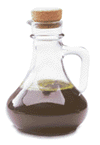

Volume 2, Issue 14, October 2000 ISSN 1488-3988
America!
Nader's Third Way
The campaign that won't win has feet that won't quit. Over the last few months, Ralph Nader's 2000 presidential election bid has gained considerable momentum. Packed rallies at Portland and Boston (10,000 plus), Minnesota (12,000) and elsewhere has outdrawn comparable rallies held by Nader's mainstream opponents. Nader and his VP candidate Winona LaDuke are benefiting from pockets of support that have grown into regional bastions.
 Savvy touring, including a Washington DC press conference with the Oglala Sioux and NAIHC (See DEA raid Pine Ridge; this issue), an appearance at Farm Aid, a pit stop in Toronto to woo expatriate Americans, scheduled appearances on Letterman and Saturday Night Live and a Super Rally at Madison Square Garden, has kept Nader's campaign in the public eye. Astute use of the internet has also played a significant role.
Savvy touring, including a Washington DC press conference with the Oglala Sioux and NAIHC (See DEA raid Pine Ridge; this issue), an appearance at Farm Aid, a pit stop in Toronto to woo expatriate Americans, scheduled appearances on Letterman and Saturday Night Live and a Super Rally at Madison Square Garden, has kept Nader's campaign in the public eye. Astute use of the internet has also played a significant role.
Nader's campaign platform includes a slate of "fresh ideas", including the legalisation of industrial hemp.
In identifying hemp as a crop that could help American farmers, Nader has also called for the enforcement of antitrust laws against giant agribusiness conglomerates, and a redirection of federal research funds toward ecologically sensible production methods. Nader is also the only candidate who has supported product labelling for GM foods.
Buchanen's Reform and the Harry Browne Libertarians are the two other national groups who have shoehorned hemp into their platform
Operating under the slogan "Government Of, By and For the People, not Monied Interests", Nader's campaign is also notable for not accepting corporate contributions. Campaign organisers says that the big drive of late is a result of volunteerism and a bankroll made up of small individual contributions. As of October, the campaign had reportedly raised $3.5 million US, mostly in $5-10 bills.
The point of course is not winning - but to get the Green Party on the electoral map. By hitting 5% of the popular vote, Nader and Co., will receive federal funding in the next go around, at which point that will be able to launch a fuller slate of candidates, and truly become a national political alternative.
Despite being "born to lose", a tight presidential race is making Nader's run all the more important. Potential exists for his campaign to effect the outcome of swing states, such as Wisconsin.
For more information check out www.votenader.org or email kevin@votenader.org
Fears that Nader will split the Democrat vote has raised the ire of some liberal media pundits. Check out www.salon.com for commentary along this line. Or check out www.alternet.org to read what the independent press is writing.

VoteHemp.com Releases "Hemp Friendly" Voter Guide
By Eric Steenstra
On October 3rd, VoteHemp.com published its Industrial Hemp Voter Guide and is making it available free of charge to the public. The guide lists the positions of candidates for the US Congress, Senate and Presidency on Industrial Hemp agriculture.
VoteHemp.com is distributing its voter guide through a network of Hemp and natural foods retailers, their State Coordinators and activists on and off college campuses nation-wide. Voter Guides are also available on the VoteHemp web site (http://www.votehemp.com) and can be printed out for distribution.
In July 2000 VoteHemp sent out position request letters to candidates. The response to the VoteHemp candidate survey has been quite positive. With all congressional seats and 1/3 of the senatorial seats up for grabs, more than 380 candidates are taking a pro-hemp stance and there are pro-hemp candidates running in every state. Congressmen James McGovern (D) MA, Barney Frank (D) MA, Maurice Hinchey (D) NY, Tom Campbell (R) CA and Jim McDermott (D) WA are leading the way in Congress.
Lloyd Hart, National Co-ordinator of the VoteHemp campaign, believes that industrial hemp agriculture has a bright future in America. "We have created a wedge in Congress that can only grow as more of our family farms go under and consumers increasingly demand products produced with sustainable materials such as the oil and fiber derived from imported Industrial Hemp that go into body care, food, paper and other myriad products."
"The VoteHemp Voter Guide demonstrates a broad base of support for Industrial Hemp agriculture in the United States," says Hart. VoteHemp is planning a Hemp Summit in Washington, DC in 2001 to help bring the Industrial Hemp issue to the forefront and bring pro-hemp legislators together with farmers, researchers and industry.
For more information visit the VoteHemp web site or contact:
Lloyd Hart, National Co-ordinator, Ph: 508-693-5992, Fax: 509-692-7261 lloyd@votehemp.com , http://www.votehemp.com
Eric Steenstra is the Vice President of Votehemp.com. He can be reached at eric@votehemp.com
US State Legislation Update: 2000
By John Howell
On the eve of the 2000-2001 state legislative season in the US (which begins in full force in January 2001), real lawmaking progress has been made toward the re-introduction of industrial hemp into American agriculture.
State governmental bodies, from departments of agriculture to agri-business committees, have proven very responsive to the increasing interest from business people, agricultural officials, and legislators who want industrial hemp considered as an alternative crop for American farmers. At the annual meeting of the National Conference of State Legislators (NCSL) in Chicago in July, panel discussions on the issue of industrial hemp were among the most popular at the convention, and a hemp product and information booth sponsored by Hempwell Inc., a New York marketing/advocacy firm, was visited by over 1,000 of the legislators, staff members, and policymakers who attended the meetings. Response and interest was overwhelmingly positive.
Since each state has adopted its own approach to the issue in the absence of any positive overall federal initiative, the overlapping welter of current individual bills, resolutions, and appropriations for study projects can be somewhat confusing. Here's the most accurate update available at the moment:
Eleven states have now passed pro-hemp bills and/or resolutions. The bills passed by four states vary from authorising research projects (Hawaii) to permitting individuals to produce hemp (Minnesota, Maryland). North Dakota's bills propose both models. Six other states have adopted resolutions (non-binding petitions) urging the federal government to change its anti-hemp regulations (Arkansas, California, Illinois, Montana, Vermont, and Virginia). And the New Mexico House passed an appropriations bill calling for a study, as did Illinois (the Illinois Senate has agreed to consider a research project bill in December, after the House adopted a resolution).
On the eve of the 2000-2001 season, hemp bills will be re-introduced in some states where they have been previously defeated, notably in Missouri, where in 1997 a bill passed the Senate but was withdrawn during a House debate, and in New Hampshire, where bills have narrowly failed to pass during the three past sessions. Some states that have passed resolutions plan to offer bills, notably Arkansas. And pro-hemp bills being prepared in several other states that have not previously debated the issue, notably Wisconsin, Maine, and Pennsylvania.
To date, it is not clear if some states that have failed to pass hemp bills have legislation this upcoming season.
The critical mass of pro-hemp activity at the state level is beginning to have an impact on federal rule making. The NCSL, which represents all state governments to the federal government, will consider a pro-hemp resolution at its annual executive meeting this December. Even the consideration of such a petition has caught the attention of the federal system; the actual adoption of a pro-hemp stance would make clear just how strongly the states consider industrial hemp as an alternative crop for American farmers.
Pressure from a large number of states, especially from generally Republican Midwestern states, could cause the federal bureaucracy to change its present anti-hemp stance.
John Howell is the president of Hempwell Inc., a New York City marketing and advocacy firm for businesses with an interest in hemp products. He can be reached at jhowell@hempwell.com
DEA raid Pine Ridge: hemp lost
 A DEA-led raid hit the Pine Ridge Indian Reservation on August 24th and seized the feral hemp crops of the Oglala Sioux Tribe (see HCFR#11). During the raid, 25 armed officers -- including personal from the Drug Enforcement Administration (DEA), Federal Bureau of Investigation (FBI), US Marshals Service, and Northern Plains Safe Trails Drug Task Force seized more than 3,700 plants -- two days before the crop was to be harvested.
A DEA-led raid hit the Pine Ridge Indian Reservation on August 24th and seized the feral hemp crops of the Oglala Sioux Tribe (see HCFR#11). During the raid, 25 armed officers -- including personal from the Drug Enforcement Administration (DEA), Federal Bureau of Investigation (FBI), US Marshals Service, and Northern Plains Safe Trails Drug Task Force seized more than 3,700 plants -- two days before the crop was to be harvested.
According to Alex White Plume, who had 1.5 acres of hemp on his land, federal officials told him they were not making any arrests because they "didn't want to get into a political controversy."
Days after the raid, Joe American Horse, a tribal program director, spoke at a Washington DC press conference. He shared the platform with Green party candidate Ralph Nader, and members of the North American Industrial Hemp Council (see Nader's Third Way this issue).
At the conference,American Horse denounced federal agents for invading territory considered sovereign by the tribe and for hauling away the results of a bumper crop. Some of the plants were growing up to 20 feet tall, he said. (For his part, Nader used the platform as an opportunity to challenge Al Gore and George W. Bush to explain their positions on industrial hemp. Neither has responded.)
The Pine Ridge Oglala Sioux were growing hemp as part of an economic development strategy. They have been working on prototype housing using recycled tires and a hemp mixture (Hempcrete) to make an adobe-type home.
According to a Tribal Ordinance that distinguished between hemp and marijuana, planting the hemp on the reserve was legal. Federal authorities have said they do not recognise the fine distinction that the band has made, and therefore do not support the tribe's ordinance.
A separate bill to let South Dakota farmers raise hemp was killed in the state Legislature last February.
A sample of the Oglala crop had been sent to the University of Mississippi in July for analysis. Reportedly, the testing did not detect THC in the plant.
On September 29th, the crop was ordered destroyed by a state district court. The Kentucky Hempgrowers Cooperative has since offered to replace the hemp with legal bales from Canada.
Sources: Indiancountrytoday.com, lakotanationjournal.com, rapidcityjournal.com, Kentucky Hemp Growers
The United States now has more prisoners than farmers
According to the Washington, DC-based Justice Policy Institute, the United States prison population recently topped 2 million. And according to the last farm census, there were 1.9 million farms in the US (a farm is defined as any place selling $1,000 or more of agricultural products). In other words, there are more people behind bars in the US than there are behind the wheel of a tractor.
While some would argue that the US criminal justice system and industrial agriculture have little in common, the statistics reflect social systems in profound crisis:
Source: Rural Foundation Advancement International, www.rafi.org
American Beauty
Clips, quips and observations on the "last country on earth that'll have legal hemp production"
As of web time the DEA have not yet proposed amendments to the Controlled Drugs and Substances Act that would redefine all hemp products containing any amount of THC as "marijuana", a schedule I substance. Under this scheme, hemp skincare and food products intended for human consumption would be banned, while other hemp products would be allowed.
As well, despite assurances that Canadian trade officials would receive notification of writing from US Customs on the importation on hemp products, this hasn't happened either. US hemp policy appears frozen; perhaps the lobbying is working.
Smart money is that nothing will change until after this year's elections are wrapped up.
LATEBREAKING: Barry McCaffrey, the White House drug policy adviser for five years (ONDCP), has announced he is leaving his job to pursue opportunities in the private sector. His resignation is effective Jan. 6, 2001, two weeks before President Clinton leaves office.
The hard-line McCaffrey was appointed "Drug Czar" by Clinton in part to deflect from the perception that the President was soft on the Drug War. During his regime, hemp proponents have been frustrated by McCaffrey's inability (or unwillingness) to consider industrial hemp as a legitimate crop.
McCaffrey is reportedly considering teaching offers and writing a few books.
Big name hemp users The Body Shop has launched its own lobby via the web www.savehemp.org is now up and running. Visitors can send a letter directly to the DEA and other government officials via this web site. The UK based cosmetics firm also exhibited at this year's Farm Aid for the first time. Savehemp.com is also looking for industry partners.
Meanwhile, the scuttlebutt from the Natural Products Expo East is that Revlon (NYE:REV) will be launching their own hemp based lipstick by Xmas. Revlon, who do $1.6 billion US in business a year globally, say that "they intend to stimulate top-line growth through breakthrough cosmetics innovation and a renewed focus on the skin care category." The cosmetics company's interest in natural products is borne out by the launch of their Vitamin C Absolutes line, which "harnesses the proven antioxidant and skin refreshing power of Vitamin C."
According to the American Medical Association, US companies are moving away from drug screenings and other controversial employment tests. While some employers are dropping these kind of exams in the face of a tight labour market, others are questioning their effectiveness, or simply fear a lawsuit. Companies requiring drug testing of current employees have fallen from 62% in 1997 to 47% this year. Meanwhile, the number of employees testing positive has also fallen to the lowest level in 11 years, according to Quest Diagnostics, a NJ-based provider of diagnostic testing that compiles statistics semi-annually for clients company performs 10 million drug tests a year. Source: USA Today.
Do hemp foods cause a positive drug test anyway? Highly unlikely -- especially if the source is clean next-to-zero THC Canadian. Read up on the project summary of Gero Leson and Petra Pless's recent study, Evaluating Interference of THC levels in Hemp Food Products with Employee Drug Testing at www.gov.mb.ca/agriculture/research/ardi/projects/98-231.html or www.naihc.org/hemp_information/content/THC_emp_drug_testing.html.

The Leson study was financed by Agri-Food Research and Development Initiative (ARDI), Manitoba; North American Industrial Hemp Council (NAIHC), Wisconsin; Atlas Corp., California; Canadian Hemp Corp., BC; Dr. Bronner's Magic Soaps, California; Fresh Hemp Foods, Manitoba; Galaxy Global Eatery, New York; Hempola, Ontario; Hempwell Inc., NY; HempWorld™, California; Kenex Ltd., Ontario; Nutiva, California; Spectrum Essentials, California.
Orincon Corp, an intelligent systems technology provider, has developed an automatic detection system to locate marijuana from aircraft-mounted sensors. Based on a Hyperspectral Sensor System, Orincon's "pot-buster" camera can detect cannabis plants from an elevation of 5,000 feet, and from several hundred yards on the ground, against a backdrop of heavy vegetation. Orincon says "This sophisticated technology can even differentiate a marijuana plant from hemp, a similar, but legal plant used to make rope and clothing."
The Hyperspectral Sensor System works by breaking portions of the optical spectrum into as many as 30 unique colours at a rate of 30 times per second. First, the instrument quantifies the spectral energy in each image and then uses this to build a matched filter "tuned" to the specific target. For cannabis detection, the image is processed further to yield a clear feature identification.
For more information check out: Orincon's press release.

Hawaii celebrated Industrial Hemp Field Day on September 5, 2000. The event provided Dr. Dave West, the lead scientist for the research project to discuss his results.
The state's latitude has the benefit of a long period of darkness, which a light sensitive plant such as cannabis responds to quite well. The plants though did not reach the height of northern latitudes, reaching heights of five feet. Because of Hawaii's location, West says that it is possible for Hawaii to have five crops in a calendar year.
According to West: "Two months from planting to harvest means Hawaii is an attractive breeding and production site for industrial hemp."
Hemp's role in phytoremediation is being studied at the same site by Dan Paquin of the University of Hawaii.
Despite complying with DEA licensing requirements such as fencing, lights and security to keep out two-legged marauders, the biggest threats to the well being of Hawaii's garden-sized hemp crop in the field had wings (birds) and bellies (slugs).
Despite some delays, the DEA has recently approved a seed import permit for the project, so the investigation can continue.
Source: Hawaii Landscape
To go back to the Table of Contents: Click Here
To go to the next section, Hempseed and Hemp Food: Click Here
__________________________________________________________
© 1999-2000 AHEM/HCFR PUBLISHING. INDIVIDUAL ARTICLES REMAIN PROPERTY OF THE AUTHOR (S). NOT TO BE DUPLICATED FOR FINANCIAL OR PERSONAL GAIN. CONTACT US ABOUT REPRODUCTION RIGHTS. CLAIMS MADE BY ADVERTISERS DO NOT IMPLY ENDORSEMENT BY THE PUBLISHER.